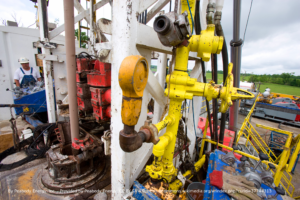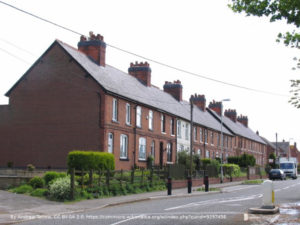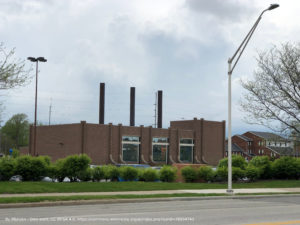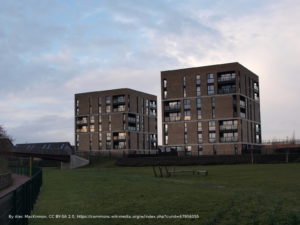
Net Zero
Welcome to Net Zero: The Energy Efficiency Podcast, episode 4, the podcast that brings you a mix of energy efficiency news, products and tips all year round. We’re interested in profiling people and products involved in promoting energy efficiency habits, products and information, so please do get in touch if you have something to contribute.
This week: net zero, tenants’ rights to energy efficiency works in their homes, and district heating. But before we get on with our advertised features, at the end of last week the UK press was reporting the National Grid’s prediction that zero carbon energy sources will provide more than half the UK’s energy in 2019.
Coal-fired power is declining, replaced by clean sources of power such as wind, solar, hydro and nuclear. So far this year coal-fired power has generated only 3% of power, whereas renewable eneergy has leapt from generating just 2% to 20%. This comes on the back of Britain’s longest stretch of coal-free power generation recently, equivalent, according to a Guardian article, to preventing 5m tonnes of CO2 being release into the atmosphere, the equivalent of a staggering 12bn miles driven in a car.
The government plans to phase out all coal-fired power generation in just six years from now, so the Natinal Grid has the job of ensuring other sources can replace it. It is spending over £1bn a year to adapt the grid for all renewables.
Net Zero

Net zero is in the news every day just now it seems – so what is it? According to the LSE’s Grantham Institute on climate change and the environment, net zero refers to emissions produced and emissions removed from the atmosphere. This can be achieved by reducing the emissions, extracting carbon, or a bit of both. The Grantham Institute draws a distinction between net zero, and gross-zero:
“In contrast to a gross-zero target, which would reduce emissions from all sources uniformly to zero, a net-zero emissions target is more realistic because it allows for some residual emissions.”
Trees
There are many permutations of how to achieve net zero. Simple tree-planting can help as trees absorb carbon dioxide. A positive knock-on from this is increased habitat for creatures of all sorts and an enhanced landscape, but this is a slow process. An article from Left Foot Forward claims that tree planting alone could deal with a third of greenhouse gas reductions needed in the next decade. This is the subject of political pressure for increased funding and government attention. Encouragingly, the CCC recommended a huge programme of reforestation and peat moorland restoration in its recent report on net zero.
Carbon capture
Technology has a huge role to play, most prominently carbon capture and storage. This in theory permits the continued burning of fossil fuels. The carbon is compressed to a liquid state then pumped deep underground into now-empty coal mines, gas reservoirs and so on. This system can capture up to 90% of carbon released from burning fossil fuels in electricity generation and some industrial processes.
Direct Air Capture removes CO2 directly from the air, converting the oxygen and storing the carbon. This type of system is used in sealed environments such as submarines and space craft, but it’s difficult to make economical at scale. As usual, there is the need to make a business case for developing technologies, creating a market for so-called ‘negative emissions’. An article on Business Green suggests that this can be achieved through a government-run system or regulated market.
Offsetting
Emissions cannot be removed completely. The CCC estimates 130 million tonnes of carbon dioxide-equivalent will still be emitted even with current technologies maximised, mainly from industry, aviation and shipping, and agriculture. Offsetting seems to be the only way to deal with these, at the moment. The Grantham Institute explains this as:
“By having another country plant more trees or use negative emissions technologies, this reduces the amount of emissions globally, so countries may wish to use this to achieve their net-zero target.”
Clearly this strategy has its limitations, ie we can’t all do it, and for this and other reasons offsetting is controversial. So far Costa Rica is the only country that believes it can reach net zero without offsetting.

So how does the rest of the world reach net zero? One theory is that schemes imposing fines on the worst polluting industries would provide an imperative to reduce emissions while generating revenue to help fund negative emissions research and systems. The CCC’s recent report suggests differing and increasing prices for carbon, with industries such as cement and steel production and aviation seeing some of the steepest rises.
Aviation
All carbon-creating travel would become more expensive with fuel duty and flight prices increasing. Industry wouldn’t welcome these price rises, already accusing carbon prices of undermining its competitiveness. The CCC recommends combining this with targetted policies to ensure the worst-off households were protected, eg through more funding for energy efficiency measures in fuel-poor homes.
Internationally
Achieving net zero is a very difficult ship to steer. Business and industry wants to protect itself but recognises it can’t carry on as it has. Incentives have to exist for the development of new technologies. Concerned populations want to see progress but not be deprived of too many features of modern life. Governments have to be seen to do something while not squashing the sectors it needs for revenue and support. There are different approaches around the world.
Bhutan is currently carbon negative as it has a population of less than a million and little industry. It aims for carbon neutrality, likely achieved through using its natural resources to generate power, but this will need to be balanced against a rising demand for cars in the kingdom.
Chile plans to close 28 coal-fired power plants in the next five years and phase out coal altogether by 2040, aiming for net zero by 2050.
Denmark is targetting cars, banning sales of new diesel and petrol cars by 2030 and hitting net zero by 2050.
Finland aims for net zero by 2035, targetting industrial logging and phasing out peat burning for power generation.
Iceland plans to phase out fossil fuels, plant trees and restore wetlands. Iceland uses renewable geothermal and hydro power so generates very little carbon through electricity production.
Scotland is basing its plans on its strong renewable energy resources and storing CO2 in depleted North Sea oilfields. It has a number of plans to go as far as it can while still attached to the UK, including reducing VAT on energy efficiency improvements in homes.
Uruguay is likely to become a net carbon sink by 2030. Uruguay is increasing forest cover and reducing emissions from farming, waste and energy.
Thank you to the website climatechangenews.com for that global rundown.
—
Tenants’ rights to energy efficiency works to their homes

In April 2018 legislation came into force requiring landlords to improve the draughtiest homes in order to agree new tenancies. Homes in bands F and G, the lowest-performance rating, must now meet band E minimum. The same regulations will affect all tenancies, new or existing, from April 2020. There will be a civil penalty of £4000 for any breaches. The government aims for all privately rented homes (note that specific phrasing) to meet band C by 2030.
In 2018 the cost ceiling was put at £2,500, but the government will now tighten up this legislation. It was designed to protect landlords from significant up front costs on work such as insulation. Now increases in the up front cost threshold to £3,500 exempt fewer landlords from carrying out works. This higher level is expected to come into force this year.
Low-rated homes
According to an article in the Guardian, there are nearly 300,000 F- and G-rated homes in England and Wales. The government expects works on houses in these bands to save tenants about £200 a year. There is widespread criticism from tenants’ interests groups and climate campaigners, claiming that a ceiling of £5000 would have lifted 40,000 homes out of fuel poverty and discomfort.
Green Deal
In April 2016 domestic tenants acquired the right to request to carry out energy efficiency improvements to their properties, with the landlord unable to reasonably refuse permission. The tenant was expected to pay for the work with no upfront cost to the landlord. At the time that covered improvements eligible for Green Deal loans, the idea being that money paid out for works was repaid directly through energy bill payments. From 2013-2015 the government supported the Green Deal Finance Company, and after that support stopped some private companies stepped in to support it instead. In 2017 this privately-backed scheme began offering loans.
Works covered include:
New or replacement boilers (condensing and biomass)
Insulation (solid wall, cavity wall, loft and floor)
Heating, hot water and lighting controls
Ground and air-source heat pumps
Fan-assisted storage heaters
Flue gas recovery
Draught proofing
Innovative hot water systems
The loan is attached to the property and so passes to a new owner if a house is sold. The National Audit Office was scathing of the original Green Deal’s performance, with minimal CO2 savings created and the loans not considered attractive by customers. If you’d like to find out more about the Green Deal schemes old and new, there’s an excellent page about it on the Which website, link in the shownotes.
From April this year, landlords now have to pay towards proposed works, with the ceiling increasing as described just now.
Complex
A tenant has to provide comprehensive information about the works they wish to carry out, including a detailed funding proposal and evidence that installers meet the required standards. A landlord can propose a counter-offer delivering equivalent energy bill savings. As you would expect, the conditions, requirements and exemptions are complex and if you are considering putting in a request you’ll have to do your homework.
Workshops
If you are a landlord you might be interested in attending one of the workshops or webinars the government is running to consult on this issue. Full details are on the gov.uk website, but sessions still to come are:
Oxford – Thursday 27 June, 10am to 1pm
Peterborough – Tuesday 2 July, 10.30am to 1pm
Greater Manchester – Wednesday 10 July, 1pm to 3.30pm
If you can’t attend a workshop, there is a webinar on 11 July, 10.30am to 12.00 (noon).
Guidance
Additionally, the Department for Business, Energy and Industrial Strategy has produced a PDF titled THE DOMESTIC PRIVATE RENTED PROPERTY MINIMUM STANDARD Guidance for landlords and Local Authorities on the minimum level of energy efficiency required to let domestic property under the Energy Efficiency (Private Rented Property) (England and Wales) Regulations 2015, as amended.
The document describes itself as providing guidance to landlords of domestic properties and others with an interest in – quite – “the minimum level of energy efficiency required to let domestic private property” – nothing like aiming for the minimum standard.
Benefit of energy efficiency works
The PDF’s introduction points out the unnecessary energy costs and poor health outcomes (and associated NHS costs, of course) of living in poorly insulated and heated homes, as well as the environmental impact. The report points out the benefit to housing fabric of good maintenance and proper heating. It expresses the wider hope that demand for energy efficiency measures will support jobs and the growth of the green construction industry and supply chain, increasing competition and bringing down costs for everyone.
According to the report many of the most poorly-performing homes were built pre-1919, which ties in with last week’s feature on Energy Efficiency in Historic Buildings. It makes some impressive claims for bringing down fuel bills, as follows:
“Average Annual Cost of Energy >> Data shows that in the PRS, the average modelled annual cost of energy for an EPC band G property is £3,105, and £2,124 for an EPC F rated property. This contrasts with an average annual cost of £1,425 for an EPC band E property6. Therefore, a tenant whose home is improved from EPC band F to EPC band E could expect to see their energy costs reduced by £700 a year so long as there were no wider changes in how they use energy in the property.” That’s quite some saving. To quote further from the PDF:
“Around a third of all fuel-poor households in England live in the PRS, despite the sector accounting for only around a fifth of all households in England.Amongst EPC F and G rated properties in the sector, recent data shows that over 40% of households are classified as fuel poor. Put simply, the PRS has a disproportionate share of the UK’s least energy-efficient properties and fuel-poor households. Installation of energy efficiency measures can help address this.”
—
District Heating

Over the next few weeks we’re going to be looking at the energy efficiency of different types of heating. This week we start with district heating. What is district heating? You might well ask as it’s not common in the UK, providing only about 2% of heat demand, but is well-established in Europe.
Also known as a heat network, it works like this: heat is generated centrally and distributed through insulated pipes to homes and business for heating spaces and water. Heat is generated in a number of ways including fossil fuels and renewables. It can also take in waste heat from nuclear power generation and other sources. Heat networks allow for energy storage on a large scale, making the National Grid’s balancing act that bit easier. There are currently about 50 schemes in the UK using thermal storage, with heat networks as a whole here reducing carbon emissions by up to a ton of CO2 per year with potential for far higher savings.
Efficient
According to Wikipedia, district heating is more efficient and generates less pollution than individual building-based boilers. There are a number of systems in use, from fifth generation systems that don’t combust on site but use heat transfer, to fossil-fuelled combined heat and power (CHP), with various permutations in operation, making the most of different energy flows as they are available.
According to a January 2018 report by the Association for Decentralised Energy,
“The Government has identified heat networks as a key technology to decarbonise heat and has allocated £320m of funding out [sic] to 2021 to grow the heat networks market. This funding is expected to draw in up to £2 billion of additional capital investment and lead to the construction of hundreds of heat networks in England and Wales. Scotland has set an ambitious target to connect 40,000 homes to heat networks by 2020, representing 1.5TWh (teraWatt) of Scotland’s heat demand.”
Considering the difficulties we will all have in reaching net zero, district networks deserve a closer look.
Heat networks can be retrofitted or connected as a building goes up, with great CO2 savings possible in the retrofit according to the Joseph Rowntree Foundation, which suggests carbon savings of over 40% per home. The government’s own research suggests that heat networks could meet up to 20% of UK heat demand in 10 years from now, and getting on for half by 2050.
Heat networks in the UK

So where are heat networks in use in the UK? One supports the Commonwealth Games Village in Glasgow. Situated in Dalmarnock in the east end of Glasgow, this has been described as one of the most significant regeneration schemes in the UK.
After the 88 acre site’s use as the Athlete’s Village for the Commonwealth Games, a site which was itself initially a contaminated brownfield site which had to be treated, it was converted into a 700 home development It includes a sizeable chunk of social housing managed by Glasgow Housing Association (GHA), West of Scotland and Thenue Housing Association. It is now an eco-friendly village with a variety of housing types. The homes are by the river and surrounded by green spaces and excellent recreational facilities as a legacy of the Games.
All the homes and the sports arenas are powered by district heating. It supplies instant heat and continuous hot water. The system is up to 40% more efficient than conventional heating schemes, delivering cost benefits to residents. Together with a Fabric First approach and installation of solar PV panels, there was a 95% carbon reduction on 2007 levels. The construction of this scheme won 25 industry awards.
Heat Network Development Unit
Other schemes and projects continue to connect consumers to heat networks, including more major cities such as Leeds and Bristol. Figures from 2017 show 17000 heat networks supplying about half a million consumers in the UK, up from 2000 networks supplying just over 200,000 users in 2013.
The government runs a Heat Network Development Unit which is seeking investment for over 80 projects. Clearly there is huge scope for growing the proportion of homes heated through heat networks by renewable sources as a plank of meeting net zero. Currently gas features prominently as a source of distributed heat. Heat networks currently in the planning expect to use so-called efficient gas combined heat and power, but also heat pumps and more waste energy.
At the moment the vast majority of customers are domestic, followed by commercial and retail, with a much smaller number of connections to universities, hospitals, public buildings and light industry.
Low awareness
Research carried out by the government three years ago indicated a low awareness of heat networks among British consumers but a fairly positive attitude towards it. Half of respondents are happy to join a scheme if their bills don’t go up. Customers on a heat network show similar levels of happiness with their service as other power customers. Technical reliability is good but there is a lower level of control for heat network customers. A proportion of consumers in older buildings suffer from over-heating because they couldn’t control their heating. Residents of much newer homes complain that poor ventilation leads to over-heating. This is probably worth putting up with though as heat network customers pay about £100 less per annum on their bill than customers with an indvidial gas boiler.
Overall heat network customers are happy and pay lower bills. Is district heating the future for low carbon, energy efficient heat provision?
—
Energy saving product of the week

This week’s product won’t directly reduce energy use for most people, but still saves a very important resource: water. It’s easy to relax about saving water when we’ve had such a wet spell as just lately in the UK, but it remains vital to conserve water wherever possible.
Toilet bricks
We’re talking this week about toilet cistern water displacement bags, or as you might have heard of them, toilet bricks. They take several forms, but whether bag, brick or blob, they sit in your cistern, meaning that less water is required to fill the cistern after each flush. If an average house has two or three loos it’s easy and cheap to put one in each cistern – it’s another of our favourite fit-and-forget devices, just like our products.
Toilet bricks are often given away free at shows and talks, but with care, a house brick or a small plastic tub with a lid, weighted down, would work just as well. If you do need to buy one, among others available is The Hippo, at £1.49. That’s available from the website savewatersavemoney.co.uk. Fit, forget, start saving water straight away.
Richard’s energy saving tip of the week
We all know that light colours reflect heat and dark colours absorb it. You can apply this to your home decor to make the most of the money you spend on heating. Most rooms have a light-coloured ceiling – a dark one would feel quite imposing – and this light colour reflects warmth. If your carpet is a dark colour, it will absorb heat and radiate it upwards. This way you keep a warm zone of radiated and reflected heat in your room.
What are we up to? This week we’re making our next batch of Petflaps including several special orders with extended trunking. We’re also preparing for a photoshoot, demonstrating the Petflap fitted into different materials. This photoshoot is long overdue and we look forward to sharing the results with you in due course.
Thank you for listening to episode 4 of the Energy Efficiency Podcast, now available through Apple Podcasts. Until next time you can find us on both Twitter and Instagram as @Ecoflap, and on Twitter we also tweet under @The Petflap
In next week’s episode we’ll look at where to start with draughtproofing your home, wave and tidal energy, and energy efficiency in self build. We’re predicted a heatwave, so remember last week’s tip about keeping fresh air flowing through your home. Bye.
“Werq” Kevin MacLeod (incompetech.com)
Licensed under Creative Commons: By Attribution 3.0 License
http://creativecommons.org/licenses/by/3.0/
